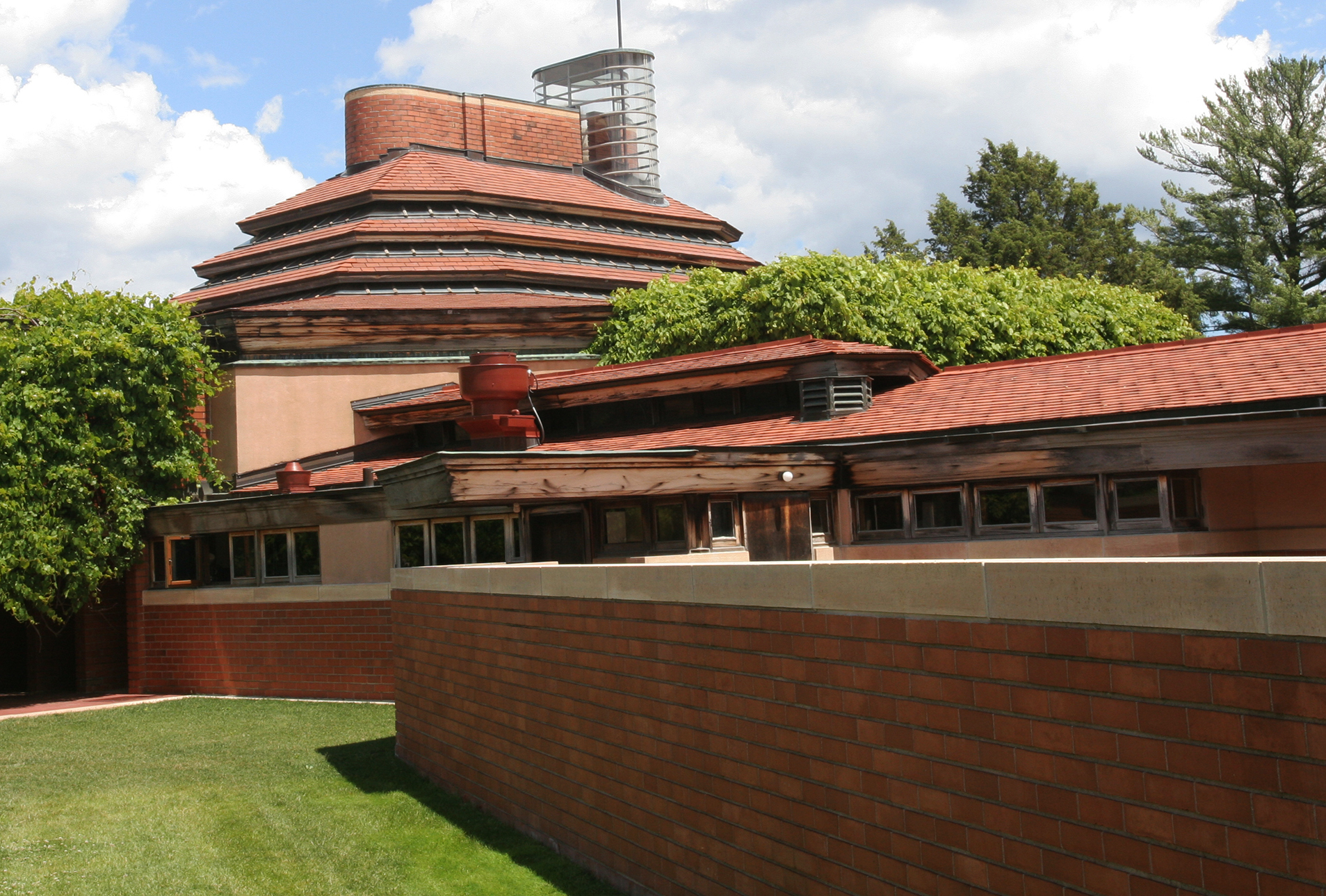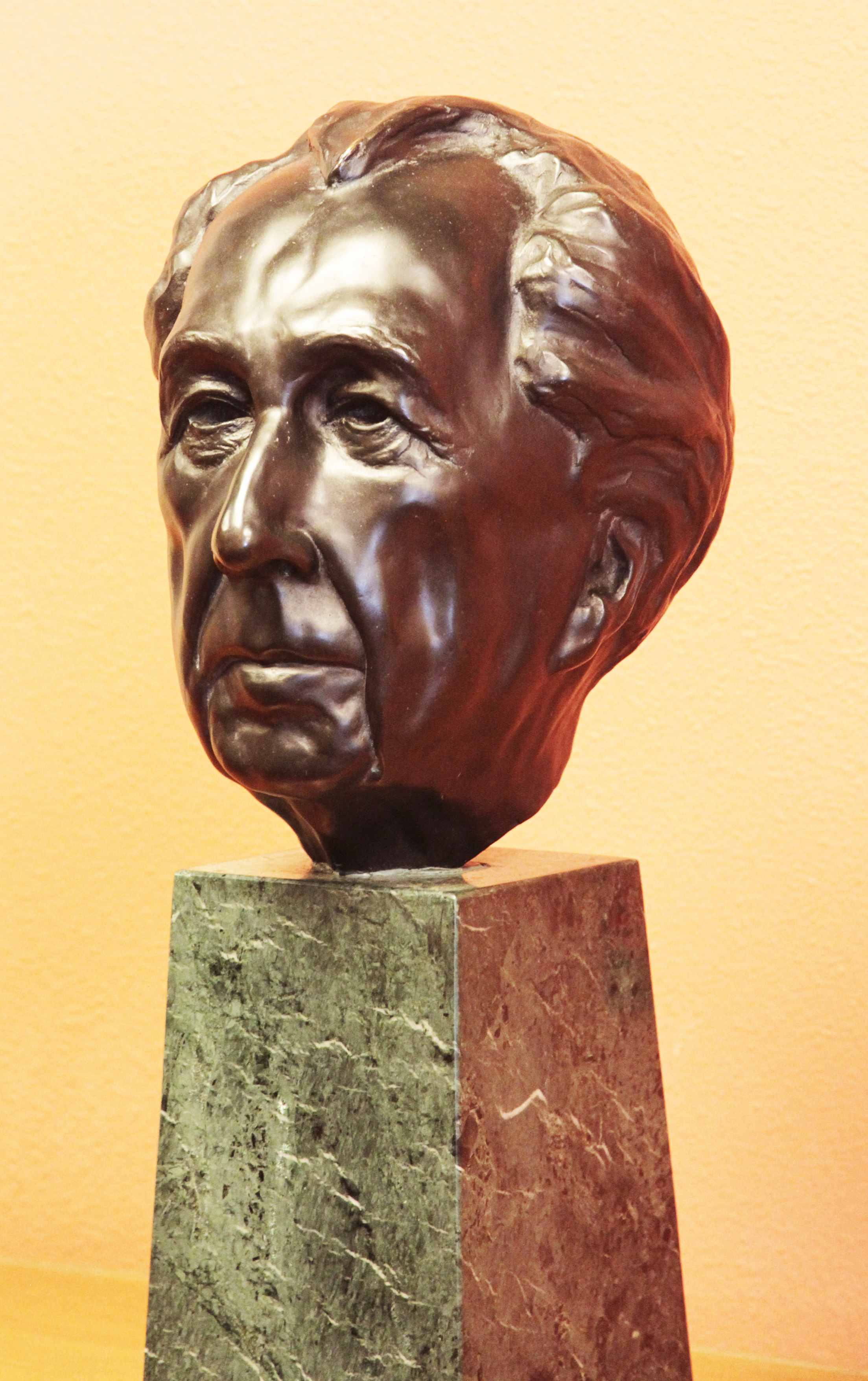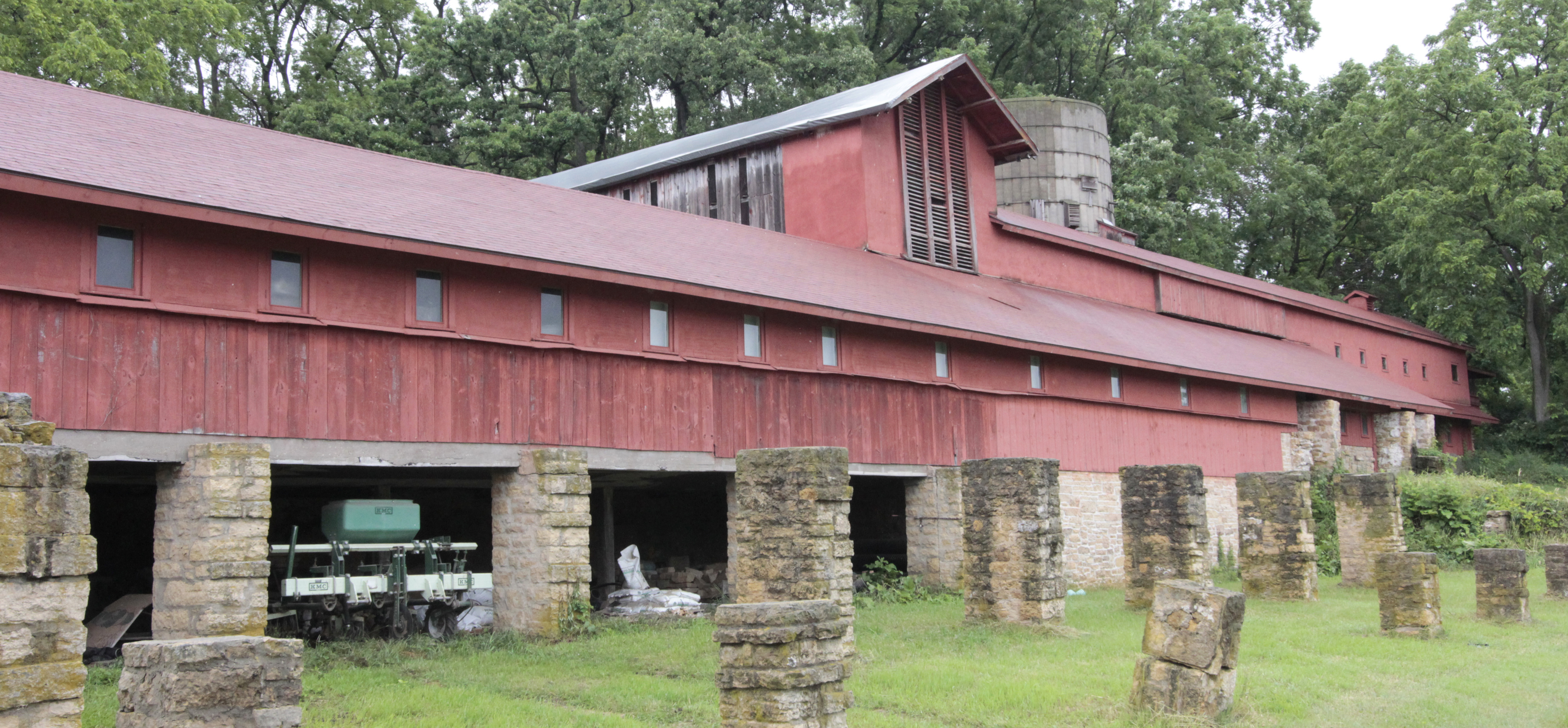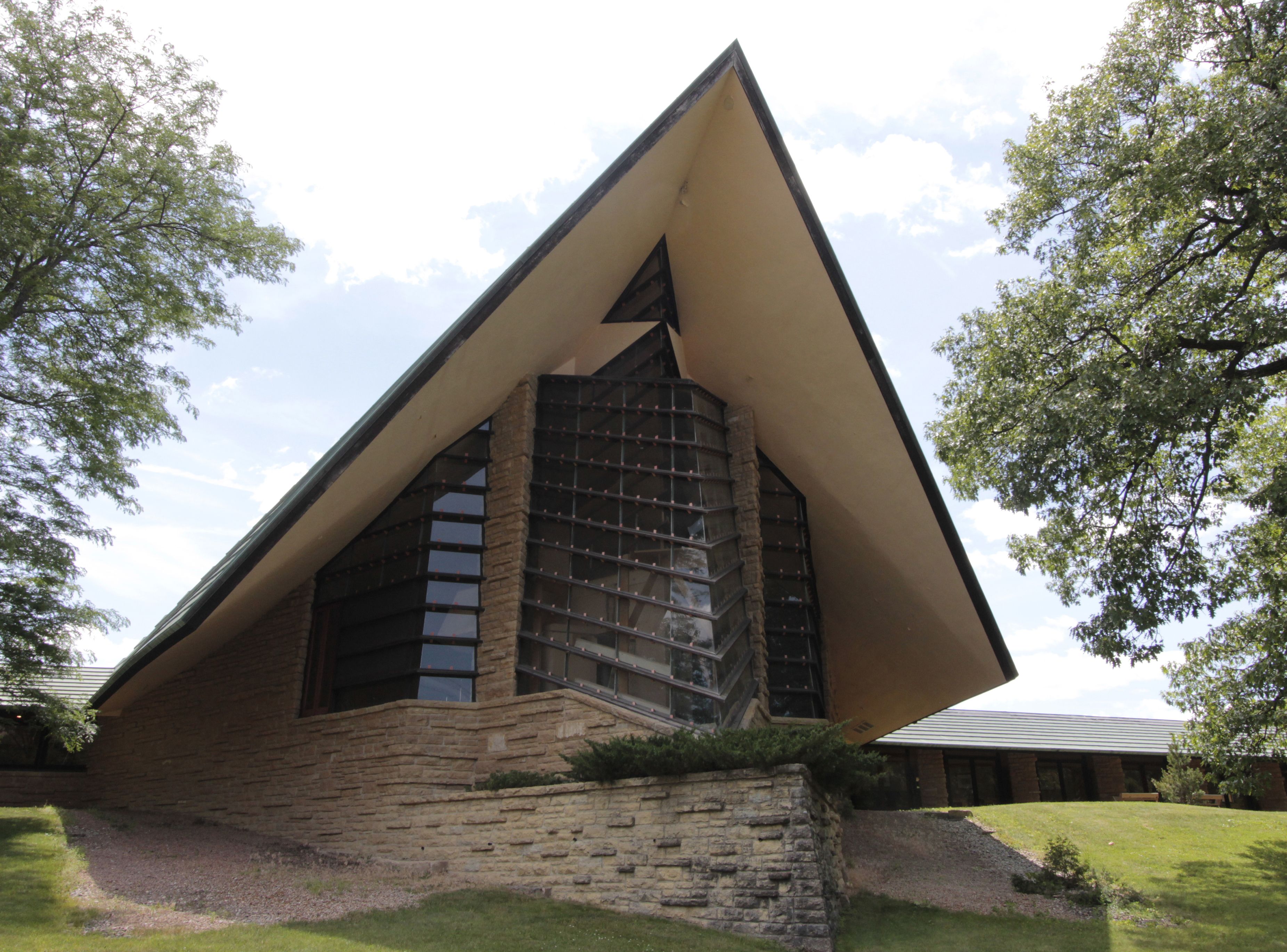SPRING GREEEN, WI — Rolling hills of green, the kind that span as far as the eye can see, is what you see in this part of southwestern Wisconsin, dubbed “the Driftless Area” because of its peculiar terrain.
This quaint hamlet, just outside the state capital Madison, is where we enter the world of famed American architect Frank Lloyd Wright and Taliesin, the remarkable house he designed and called his “shining brow on the hill.”
During his life, Wright created some incredible landmarks — 10, including Taliesin and the Guggenheim Museum in New York City, are being considered as UNESCO World Heritage sites — but it was this, his boyhood home, which seemed to be closest to his heart. And it’s our starting point on the Frank Lloyd Wright Trail, a 322-kilometre self-drive route that begins in his home state and leads to some of his most significant works.
Taliesin, where a youthful Wright spent summers tending to his uncle’s farm, is considered the crown jewel of the route. The dramatic landscape that surrounds the 800-acre estate is said to have inspired his designs later in life. After his death in 1959, the Taliesin Preservation Organization became the home’s custodian and has guarded its original brilliance.


Left: Wingspread is one of Wright's great designs. Right: Wright is considered America's greatest architect.
Visitors are allowed to see four buildings at Taliesin: The Hillside Studio and Theatre, which Wright designed for his aunts; his sister Jane’s house; the barn; and Wright’s private residence.
On the morning of our visit, a summer rain pitter-pattered on the stony facades and against the corner windows — seamless window panes are features of Wright’s striking designs.
Even if you’re not an architectural fan, hearing the stories about this complex man many regard as America’s greatest architect, certainly intrigues. Along the route we hear about Wright’s love affairs and a mistress, destruction and rebuilding, and even scandal and savage killings.
Apparently Wright built Taliesin as a love pad for him and his mistress, Martha “Mamah” Borthwick Cheney, and her children. Tragically, though, while Wright was away on a business trip, Mamah, her two children and four others, were gruesomely murdered in 1914 by a deranged ex-employee who also set fire to Taliesin.
Later, on our way to Madison, we stop at the Wright-designed Wyoming Valley School, just five kilometres up the road from Taliesin. Wright built the two-room schoolhouse in 1957 so the local kids could get a decent education close to Taliesin.
We follow the route to Racine, the small Danish community where a pastry known as kringles — think Nordic pretzel — is its most famous local dish.
Racine is also the headquarters of the world famous SC Johnson Corp., the family-run company and maker of such iconic household brands as Windex, Johnson Floor Wax, Ziploc bags, Glade, Off!, DEET — just to name a few.
It’s here we find another Wright masterpiece — SC Johnson hired the Wisconsin-born architect to design its corporate headquarters as well as the home of its then leader, Herbert “Hibbard” H.F. Johnson Jr.

Above: The Red Barn at the Taliesin estate in Spring Green was called the Midway Barn when he lived there.
“Anybody can build a typical building. I wanted to build the best office building in the world, and the only way to do that was to get the greatest architect in the world,” said H.F. Johnson years later.
SC Johnson’s administration building, which opened in 1939, is regarded as one of the top 25 buildings of the 20th century and is known for its dendriform (tree-shaped) columns that support the structure’s Great Workroom. Equally impressive is the 15-storey Research Tower completed in 1950. More than 7,000 glass tubes make up the windows of the towering research lab.
“Wright was nearing 70 and had no major commissions for a few years when this contract to create a new administration building came along,” recalls our guide Barb during my site tour.
The Johnson residence is located just a few kilometres down the road from Racine in the small hamlet of Wind Point. The estate, known as Wingspread, was built in 1939 and at 14,000 square feet is the largest of Wright’s signature Prairie-Style houses — and his last.
Like most private homes built by Wright, Wingspread’s exterior has organic design elements which intentionally blend the house with the surrounding landscape. While the house may appear compact from the outside, the nine-metre-tall chimney, floor-to-ceiling windows and skylights help elongate the interior’s living space.
In a short video visitors see before starting their free self-guided tour of Wingspread, the late Sam Johnson — son of Hibbard — recalls an amusing story involving Wright.
“My father was entertaining guests one evening at dinner,” he begins. “Everyone was there, the state governor, the mayor and other leading business people. I heard the thunder and some rain coming down. The roof started to leak on (father) and I wondered what he was going to do.
“Dad said, ‘maid, bring me the phone.’ He lifted it up and said, ‘operator I would like to talk to Mr. Frank Lloyd Wright in Taliesin West in Scottsdale (Wright’s Arizona winter home).’
“He (dad) got him on the line and said: ‘Frank you built me a beautiful house. I love the house but it leaks. I am at a dinner with the most important people in the state and it is leaking right on top of my head.’ ”


Left: Unitarian Meeting House in Madison. Right: The Wisconsin capital building was an inspiration for Wright.
The younger Johnson looks into the camera and says Wright, who was known as a cantankerous individual, responded, “ ‘Well Hib, why don’t you move your chair?’ ”
Driving into the state capital Madison, the first thing you notice is the massive domed building which bears a striking resemblance to the Capitol in Washington. Along the trail we’ve heard that it was this building that inspired a young Wright.
The thoroughfares in this handsome Midwest capital are wide, the sidewalks are spacious and there are nicely appointed flower boxes between the Linden tree-lined boulevards that mesh with the crowd-sharing bike racks.
Madison is also home to the First Unitarian Society Meeting House, another Wright creation located on farmland owned by the University of Wisconsin.
Youth congregants helped move rocks to build the church, which was completed in 1951. The modernist structure is known as Usonian architecture with its swooping windows and low hanging cantilevered entrance.
“This church structure absolutely changed church architecture,” said March Schweitzer, a volunteer guide about one of Madison’s most visited Frank Lloyd Wright buildings. “No longer is there a steeple, and no longer is a church just a square box.”
Madison’s Monona Terrace Community and Convention Centre is another of Wright’s imaginative works. However, while Wright designed the centre in 1938, it wasn’t built until 1997 on the edge of Lake Monona.
Wright called this place his Dream Civic Centre and it has become one of the most popular gathering spots in Madison — from the rooftop terrace of this spaceship-like building you get great views of the regal Capital Building off in the distance.
Over at the Madison Children’s Museum, we see kids and adults alike enjoying a new exhibition, “From Coops to Cathedrals: Nature, Childhood, and the Architecture of Frank Lloyd Wright.”
The exhibition aims to unleash the creative potential of young visitors, who can recreate activities that were common in Wright’s life — from playing make belief at his uncle’s dairy farm to resurrecting a dog house from one of Wright’s original plans. The doghouse is culled from a true story based on a 12-year-old boy named Jim Berger who wrote to Wright and asked the architect to design a doghouse for his black Labrador, Eddie. He did.In this play world, for a split second we can all marvel at being Frank Lloyd Wright.•
Information
• Most of the landmarks featured in the Frank Lloyd Wright Trail are free to the public, with some advanced reservations required at various venues.
• Accommodation and restaurants in Wisconsin are typically cheaper than larger hubs like Chicago and several museums in Madison also offer free admission.
• Important websites:
• http://www.taliesinpreservation.org/
• https://www.travelwisconsin.com/article/architecture/wisconsins-frank-lloyd-wright-trail
• http://www.visitmadison.com/
About the Author
Ilona Kauremszky is an award-winning journalist and a syndicated travel columnist. She has penned pieces for leading publishers in North America, the U.K. and Southeast Asia. She also makes appearances on TV and radio. Co-producer of mycompass.ca, Ilona is forever finding great stories in the strangest places.